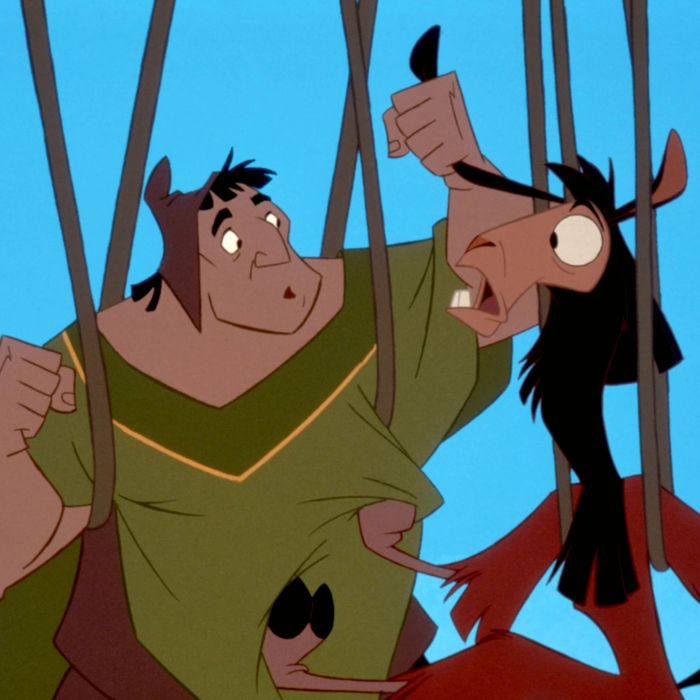
The story of the making of the 2000 movie The Emperor’s New Groove is actually the story of the making of three movies, only one of which can be legally seen today. First, there is The Kingdom of the Sun, an epic tale incorporating Inca myths, which was to be directed by The Lion King’s Roger Allers and would have starred Owen Wilson as a lowly llama herder bound to switch lives with a selfish, vain prince voiced by David Spade. The soundtrack was set to feature a whole series of songs written by Sting. The legendary Eartha Kitt would be the voice of a villainous sorceress determined to blot out the sun.
But after years of production snafus — of doubt-filled meetings and catastrophic screenings and arguments — Kingdom of the Sun was, in a stunning move, shelved. In its place came The Emperor’s New Groove, a raucous comedy directed by Mark Dindal, starring Spade as a selfish, vain emperor who involuntarily transforms into a llama and winds up befriending a kindly peasant, this one played by John Goodman. Eartha Kitt remained as the villain, now joined by a delightfully conflicted henchman voiced by Seinfeld’s Patrick Warburton. New Groove would ultimately feature only two songs written by Sting — one, a Vegas-style number performed by Tom Jones, and the other, a closing credits song performed by Sting himself (for which he was nominated for an Oscar). Racing against an impossible deadline rumored to be imposed by an impending Happy Meal deal, the final film was, in the words of one its co-creators, the result of the “funniest writers’ room you could possibly have. A table of people who had nothing to lose.”
While all this was going on, however, there was a third movie — a behind-the-scenes documentary called The Sweatbox, directed by Sting’s wife, Trudie Styler, and John Paul Davidson, which over the course of production went from being an informative making-of to a riveting, no-holds-barred, occasionally funny, often heartbreaking look at how the Disney sausage is made, and sometimes unmade. Premiering at festivals in 2002, The Sweatbox ultimately proved so awkwardly truthful that Disney has refused to release it, though the film does occasionally pop up on YouTube and torrent sites.
So, uh, how — and why — did all of this happen? Here is the oral history of The Emperor’s New Groove, an irreverent, pratfall-heavy, non sequitur of an animated movie that so defied Disney’s painstakingly deliberate traditions, it’s hard to believe it actually exists today.
I. Once upon a time, there was a movie called The Kingdom of the Sun …By the mid-1990s, the Disney Renaissance was in full bloom after the success of films like Beauty and the Beast, Aladdin, and The Lion King. The studio was looking to expand its footprint with films set in various cultures, beginning to work on titles such as Pocahontas and Mulan. It was in this atmosphere, in ’94, that The Lion King director Roger Allers began developing The Kingdom of the Sun, an epic, romantic, musical adventure based on Incan myths.
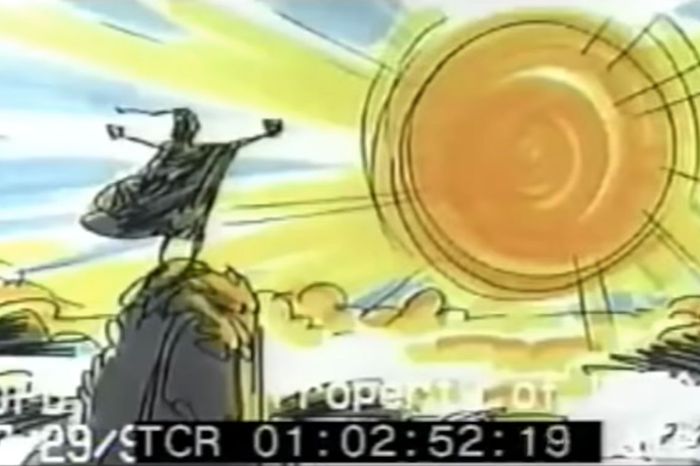
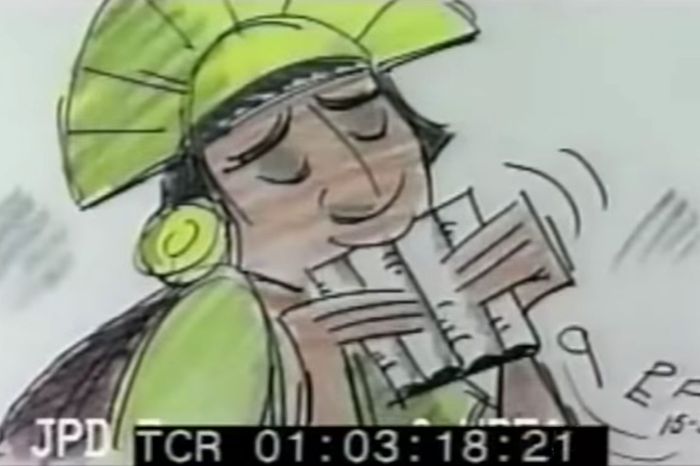
Roger Allers (director, The Kingdom of the Sun): I had finished Lion King and was looking around to see what to do next. Disney was starting to push to do things set in other cultures. Tom Schumacher [executive vice-president for Walt Disney Feature Animation] called me in, and he had three pictures up on the wall: representations of Inca, Aztec, and Mayan cultures. For the Incan culture there was a picture of these amazing stone buildings in Machu Picchu, the city atop a mountain in the clouds. I said, “I’d love to try to develop something around the Incas.” I started looking for an idea.
In their creation myth of the world there was a god named Viracocha who brought light to the world by throwing a rope around a distant star and pulling it to the earth. That image to me was really exciting. The most stunning visual in the film would have been the conclusion, where the sun is roped and pulled into this writhing mass of dark images. I was hoping it would be a mix of mythology, humor, romance. I had looked at Prisoner of Zenda as a story, about a prince and his distant cousin who are dead ringers. The prince has enemies that want to kidnap him and the look-alike cousin has to stand in for him. It was also reflective of The Prince and the Pauper. And I thought up the character of Yzma, the high priestess who wants to take over and regain her lost youth and beauty. The comic villains had always been my favorite characters in all the films. She was funny, and long, and skinny, and angular, and you could do lots of physical humor with her.
Michael Eisner wanted me to interview Barbara Streisand to play Yzma. I went and met with her in London. But I was so happy to cast Eartha Kitt in the role. With these older divas, you can be a little afraid of getting in the room. With Eartha, at our first meeting, I’d just come back from a research trip to Peru, and I brought her back a bunch of Peruvian textiles — these wonderful geometric patterns — as a gift, and she immediately opened up.
Owen Wilson was the lead, the llama herder, Pacha. I think he had just done Bottle Rocket, so no one really knew him, but he had this kind of slow, drawly way of speaking, which felt like an equivalent of someone from out in the sticks. And of course, we were familiar with David Spade from Saturday Night Live. They were a fun contrast.
David Spade (Kuzco): It was me and Owen Wilson. We were going to switch jobs. I was an emperor and he was a peasant, and Carla Gugino was a princess. The first time I did my voice, I was naïvely saying, “What do you want? This kind of guy? A deep voice? Or an emperor like, ‘Ooh,’ a highfalutin guy?” And they said, “No, just your nasally, normal, annoying, sarcastic voice.”
Mark Dindal (director, The Emperor’s New Groove): I came on in the beginning stages of storyboard. I don’t think a story reel had been put together yet. I was brought on to help that process. At that time, they were having co-directors: Roger was the director and I was the co-director, kind of like a co-pilot — someone to bounce ideas off of, because it’s a very collaborative medium.
II. Sting comes onboard, with a twist.After the breakup of the Police, Sting had become a massive international solo star. Meanwhile, Elton John’s songs for The Lion King had proven to be unforgettable. It only made sense that the company would now approach another star to do something similar: to compose a broad variety of songs to enhance a film’s musical-theater-style appeal — which was, after all, part of the Disney formula.
Allers: I had put a year or more in before I had the idea of asking Sting if he would like to do the music. On one of his albums, he had something that was Latin American–sounding. We met with Sting at his home in England which is sort of near Stonehenge. I met his wife Trudie. They were very gracious people. Pretty shortly after that, Trudie came up with the idea of doing a documentary about Sting’s experience on a Disney film. She and her filmmaker J.P. Davidson would come periodically and canvass us, film things, interview people. They got to watch the whole up and down of the movie.
Randy Fullmer (producer): I think Tom Schumacher wanted to keep Sting in the boat. He was afraid Sting had an unrealistic idea of how bumpy the ride would be, that Sting would get exasperated with the process and walk away. So, he thought, If Trudie’s doing a documentary, it’s another way to lock them into the process.
I think Sting taught math in school at one point; he kept a notebook that looked like a mathematician’s notebook, maybe 100 pages of really tight detailed beats. He would ask, “Is there a template song you have in mind? Is there a popular song that you think, Oh, it would be great if it was like that?” It wouldn’t be that he would copy that song, but he would look at the phraseology and the construction of that particular song.
You could tell he got kind of uptight and a little annoyed with us, because it didn’t go the way he thought it would go. He was so anxious to get going that he kept jumping ahead of us. Sometimes you would drop a character that was going to be the person singing that song.
Allers: Sting wrote five or six songs, none of which made it into The Emperor’s New Groove because the tone of it was so different. I love the one he wrote for Yzma, “Snuff Out the Light,” where she goes down to the catacombs and has a song and dance with all the mummies.
III. The Bake-Off.All Disney films famously went through years of development and production, with different ideas and approaches constantly being reviewed and discarded, often after contentious screenings of work-in-progress versions of a movie. At first, The Kingdom of the Sun was no different. But after a couple of years, it seemed that less progress than usual was being made on the film, at least according to Disney executives. This resulted in a decision that was unprecedented at the time — caused partly by the surprisingly precarious position in which the company was finding itself in the late 1990s.
David Reynolds (screenwriter): I had been one of the original writers on Late Night With Conan O’Brien. I started that show up in 1993, and was there till 1995, then came back to L.A. I hadn’t slept in two years. I started rewriting on Tarzan. Then I worked on A Bug’s Life. I started stacking up jobs. A couple of weeks on Dinosaur. Changes to Atlantis or Toy Story II. Like an old studio writer. In the middle of that, they said, “Come on over to Kingdom of the Sun.” I saw the whole story — the Prince and the Pauper, then everything goes to darkness, and you’ve got to rope the sun. It wasn’t very funny. They asked me to rework dialogue and that kind of stuff.
Fullmer: With Kingdom of the Sun, it seemed so promising at first. There were so many elements, all of which were fun and good. Yzma was terrific. Sting was doing fantastic music. But I think Roger tried to hang onto too many elements. I met a very nice woman on a plane once coming back from New York, where we’d recorded Sting. She was like, “Oh, you work at Disney. What are you doing?” Blah, blah, blah. “Oh, my. So, what the movie’s about.” I feel like I talked until we got to Los Angeles, trying to explain it all. And I realized, Okay, this is not good. There’s too much here.
Chris Williams (storyboard artist): I was there for a good long run while it was still Kingdom of the Sun. Getting a story together is really challenging. I mean, every movie is hard. But it was a difficult period where we just weren’t getting the traction.
Allers: It started off as just a chipping away. I’d have to take this out, that out, change this. It was becoming reduced, and then it wasn’t quite as interesting as it started off. There was an article where some writer did a comparison of all the Disney films — maybe it was all the modern canon, I don’t remember — and made it look like they were all the same. They all had a hero. They all had a villain. They all had a love song. I think it freaked Peter [Schneider, president of Disney Feature Animation] out. He felt we were just repeating ourselves.
Fullmer: Roger had been thinking about this for a long time before we started the movie. He was charmed by Peru and the culture. Some people are completely in love with originality and being super-authentic with parts of the culture. And other people, it’s like, “Eh, that doesn’t really matter. We’re here to entertain people.” That’s a debate that goes on often at Disney.
Don Hahn (executive producer): First of all, every Disney movie feels flat when you start out. If you read Ed Catmull’s book about Pixar, every movie is awful the first six times. Then on the seventh time it’s kind of good. So that was the case. Jeffrey Katzenberg had left in ’94. He was a huge part of our lives. There was some stress going on between Roy Disney and Michael Eisner, and I think we were looking for some change in a new direction. That era was just us reaching out in a number of directions, trying to find out, is there a genre, an approach we can take that doesn’t involve the Broadway musicals that we love and tried on for so many years?
Peter Schneider (president of Walt Disney Feature Animation): In the ’90s, before Jeffrey Katzenberg left town and started DreamWorks, Disney had a hundred or so of the best artists in the world. And other studios had one. And when you have all the top artists in the world, you can probably do no wrong. But as Pixar grew, as Blue Sky grew, as DreamWorks grew, as the business became competitive financially, other people recruited 15, 10, 20 of our top people. We were fighting a war of survival. If you really want to put a finger on it, Jeffrey was as maniacal as Trump was. “I’m going to destroy Michael Eisner!” That’s the residue of what was happening in this period.
Steve Anderson (story supervisor): I was asked to come on to Kingdom of the Sun, just to help out for a screening, which they do oftentimes if they need a couple extra wrists, for maybe a month or something. It may have been their third or fourth screening. But it turned out that it was the screening — the one that imploded. We all left the theater that we have on the first floor in feature animation. We marched up to the story room on the third floor. They had tables set up in a big square. Everybody took their place. Tom Schumacher and Peter Schneider, the heads of the studio, came in, sat down, closed the door. Tom said, “We just want to thank everyone for their work on the screening, and we’d like to ask you to leave now. We want to talk with Mark and Roger.” Next thing we know, Roger’s whole vision was in question, and the movie’s future as well.
Hahn: Roger was and is a really revered artist. The Little Mermaid and then Beauty and the Beast — just an amazing artist, storyteller.
Williams: I do remember after one of the screenings, either Tom or Peter said, “Roger, if it wasn’t you, I think I’d be pressing a button right now.”
Anderson: I remember people saying there’s too many elements in the movie. It was Prince and the Pauper. It was also the transformation of somebody into a llama. It was Yzma, who wants to raise the dead, snuff out the light, and have a world of darkness, but she also wants eternal youth and beauty. So it’s like, okay, but which one does she want?
Allers: I just felt like we were losing any sense of the culture. I know that’s not on everyone’s mind at the studio, “Let’s do films to honor cultures.” The bottom line is, “Let’s do entertaining films that everybody’s going to want to go see with their kids.” I get that, but hopefully one does both.
Williams: I think Tom and Peter were looking at this story and the room and hearing the input. They felt that there was probably one faction that was more connected to the story as it existed, and wanting to refine it. And then they heard other people giving opinions that suggested there might be a completely different movie out there. So, that was the impetus for Tom and Peter deciding to do something which was, I think, pretty unheard of, and not something I necessarily would recommend: They split the team into two halves!
Allers: They gave Mark Dindal a small crew, and me a small crew, to come up with two different versions of the story. Which is just kind of awful to compete against each other.
Hahn: It was a bake-off, plain and simple. Katzenberg, rightly or wrongly, would say, “Okay, we’re doing Pocahontas. It’s Dances With Wolves meets Romeo and Juliet. We’re doing that.” The bake-off was more about indecision in the ranks. There was a lack of executive leadership that could just say, “We’re doing this and then we’re doing that.” [We had] bake-offs from ’99 all the way through 2005.
Williams: Up until that moment, it was clear what we’re all trying to do, which is to support Roger and help him make his movie. Suddenly, my job changed. My job was now to work with Mark to try to help develop another movie, and we were competing with Roger. It was probably one of the most stressful periods of my life.
Anderson: I got pulled onto both teams, so I was pinging back and forth. And it was really uncomfortable, because even though everyone could sort of acknowledge that the [Kingdom of the Sun] movie wasn’t working, everybody just loved Roger and believed so much in him. It was so sad to watch things crumble for him. And then I had to go over to Mark and do his thing, which was super-fun. But I felt like a weird traitor or something, hopping back and forth between both teams.
Tracey Miller-Zarneke (assistant production manager: story/publicity): I spent a lot of quality time with [the documentary crew], and then the movie changed, which was fascinating. Being with a documentary crew [who were] allowed in some of the very difficult meetings that were happening was unheard of. We were like, “I can’t believe we’re filming this.”
Williams: I really was not thrilled with the fact that they were doing the documentary. We had precious little time, and our story meetings were critical. But we would have these film crews running around behind us. A story meeting is a difficult thing, because people have to present their ideas. You’re making yourself vulnerable. It can be scary. I can see these moments where a story artist would start to say something, and then literally, a boom mic would swing across the room and hover over them.
Allers: I remember after having the worst screening, J.P. interviewed me right before going in and right after coming out with all the bad news. It was like, “Wow, I’m going to have to pull myself up by my collar to do this interview.”
John Paul Davidson (director, The Sweatbox): I thought Kingdom of the Sun was great. It seemed more like a classic Disney thing. I thought that Sting had written a couple of songs which were some of his very best. They were incredibly moving and complex. It had this mythic element, with all the Incas, plus a love story. It was going to be a terrific film, in the same realm of Lion King. It was a shock when it all bit the dust.
Williams: So we all got back together. It was a strange meeting, where both teams are sitting together in the big story room. Tom and Peter were the judges. Roger went first and he pitched some of his new ideas and what he wanted to adjust. Then, we got up and pitched. Even more than probably pitching a story or new characters, we were pitching a tone. We were suggesting a radically different tone than what Kingdom of the Sun had been. A lot of what was funny about it was just how preposterous it was. And I’d never heard Tom and Peter laugh before. They were almost literally on the floor laughing. You felt which way the wind was blowing. And Roger was incredibly gracious. He stepped in and said, “I can feel which way this is going, and I totally understand. I appreciate what’s good about what they’re doing.” So, he made it easier on Tom and Peter. He made it easier on all of us. After working for a very, very long time on this other movie … rather than thinking about himself, he thought about everybody else in the room.
Dindal: Roger and I spoke on the phone. I had come on to be his co-director, not take the movie and run with it in another direction.
Allers: I could have stayed on as a directing partner, but I just didn’t think I could do it. I had put so much into it. I mean, it was four years developing, and the movie was like one-third animated. It was just going to be too disheartening for me. I had no resentment towards anybody who took over the film. I myself had worked with another director on the early versions of Lion King before he was taken off and I was teamed up with somebody else. It happens so often.
Hahn: Brenda Chapman got taken off of Brave, which is her story about her and her daughter! It’s almost a tradition at a certain point.
Schneider: We fired Richard Purdum off of Beauty and the Beast. This is the way the business worked.
IV. “A table of people who had nothing to lose.”So, by 1999, the epic Incan mythological adventure-romance-musical about a llama herder and a prince changing places while a megalomaniacal priestess attempts to plunge the world into darkness, had become a goofy, irreverent buddy comedy being written by “probably the funniest writers’ room you could possibly have.” That room had approximately a year to get it done.
Allers: When they went with Mark’s version, the one thing they didn’t do was change the release date. So the Kingdom of the Sun release date became The Emperor’s New Groove release date.
Fullmer: We had a year, literally, to put that whole thing together. There’s a deadline because we got a McDonald’s Happy Meal that has to come on a certain date, and there are big fines to pay if you don’t do that.
Reynolds: I remember early on when I was working on Tarzan. It was around a quarter to six or seven, and somebody says, “Well, okay, that’s it. I’m just going to leave it here and then we’ll pick it up tomorrow.” And I said, “Oh, so are we ordering dinner now?” And they said, “What? We don’t do that. No, we’re going home. These characters aren’t going anywhere. We’ve got four years to make this thing.” I just couldn’t wrap my head around the idea that you could leave things mid-sentence basically. [On Emperor’s New Groove,] we were writing in real time. In a normal four-year process, you’ve got meetings, you’ve got development people going, “What if the girl was a boy? What if the bird was a flower?” And then you have to run all those ideas. But we didn’t have any time. They had to leave us alone. It was the greatest thing in the world.
Hahn: You put Mark with Randy, with Dave Reynolds, with all those guys, it was probably the funniest writers’ room you could possibly have. A table of people who had nothing to lose.
Williams: We recognized that two things were really working well from Kingdom of the Sun: David Spade as Kuzco and Eartha Kitt as Yzma. “Well, what if we just started with those two things? Just hold on to those two things and build from them.” I suggested that we come up with a different character than the Pacha that was in Kingdom of the Sun.
What’s the opposite of David Spade’s Kuzco? I imagined an older character. A bigger, heavier character. A family man, someone who took the responsibility seriously. A selfless character. And I remember drawing this big sort of mountain of a dude, sitting on a little hill with a llama, and saying, “This is a Pacha that I think could work.”
Miller-Zarneke: That brainstorm of having Pacha be the father figure that Kuzco never had — once they came up with that, they were like, “Well, who would be an amazing father that you’d want to have?” John Goodman. I don’t remember them talking seriously about anybody else.
John Goodman (Pacha): I can’t remember whether I’d worked for Disney yet or not. They had all the storyboards up and the character sketches, the models, and told me what the guy was about. I thought I’d be working with David Spade. That was one of the draws. We did a couple of sketches on SNL and I think he’s brilliant. But I don’t remember going in with him at all. It was just isolated. I would have liked to meet Eartha Kitt. I dug her.
Dindal: Yzma always kind of grew out of Eartha’s wonderful personality. I do remember thinking when we were first going to pitch her the new idea, I wonder if she’ll think this is too silly, just nonsense and ridiculous. We had the scene where they go down to the Secret Lab, on a storyboard in the story room. I was going to walk her through this new, more broadly comedic direction. So, I’m pitching. I’m doing all the voices of the characters and the dialogue’s written under the boards. Five or six panels in, she started reading the dialogue for Yzma. She instantly locked in. Nothing like that’s ever happened to me with an actor.
Allers: I could never believe the energy in that woman. How old was she when we were working together? She would come into the recording booth and do these stretches, stretching her leg up over her head like a dancer does. And she had this unpredictable way of reading lines. If you already had an idea of how you thought this line was supposed to read, you forgot about it. It was better to just see what kind of crazy interpretations she’d come up with.
V. Let there be Kronk …Yzma: So, is everything ready for tonight?
Kronk: Oh yeah, I thought we’d start off with soup and a light salad, and then see how we feel after that.
Yzma: Not the dinner! You know … ?
Kronk : Oh, right. The poison, the poison for Kuzco, the poison chosen especially to kill Kuzco, Kuzco’s poison. That poison?
Reynolds: When we were first starting out, Chris Williams had this really funny storyboard where [Pacha] is going down the line of these big soldiers. And he comes past this guy and he goes, “Hey, what’s your deal?” And Chris just started riffing that the guy goes, “My deal?” And he pulls up his shirt. He’s got an 18-pack, a washboard. He goes, “I do 1,000 crunches a day, that’s my deal.”
Williams: I’d seen the Steve Martin movie, Roxanne. That guy — the fireman. I think the actor’s name is Rick Rossovich. He also gets beat up by the Terminator. Poor Rick Rossovich probably doesn’t know what a huge influence he was on Kronk. I had storyboarded this sample scene: The Emperor’s guards were coming to kick people out of the town. And Pacha — at that point it was still a younger Pacha — went to confront the guards, and there was one guard who was sort of the precursor to Kronk. Pacha tried to distract him by getting him to talk about his physique and how fit he looked. And the guard went down this rabbit hole of talking about his exercise regimen and got lost in it. He said the key was “DEPD: Discipline, Exercise, and Proper Diet.” It was so weird that it killed. It was bonkers. But I felt like, A window is opening here at Disney Feature Animation that is not going to stay open very long.
Reynolds: I laughed so hard at that guy. I said, “You know who that is?” I said, “That’s Patrick Warburton.” And everybody said, “Who’s that?” I go, “You know, the guy from Seinfeld. He plays Puddy.”
Patrick Warburton (Kronk): I remember thinking to myself, when I was looking at some of this dialogue, Kronk, is he an ogre, a giant, a robot, a monster? I’m not really sure. Oh, Kronk is a person. Okay. What I was able to decipher was that he was a henchman, but something of a reticent henchman, not so aggressive or nasty. He liked to cook. And I thought, “Well, okay, he’s not deep and gravelly.” As an actor, you’re always looking for different options. I went with one where I just thought … I brought his voice [speaks in a whispery Kronk voice] right down here, a little more whispery. And he’d get [voice breaks] excited about stuff. There’s something kind of sweet about that.
Reynolds: I remember someone said, “Well, we don’t really need that character.” And I go, “Wait, the guy next to Yzma? Yeah, no, his name’s Kronk. Chris calls him Kronk. And I think he could be really funny.” They go, “Yeah, we don’t think we need him.” I said through desperation, “Let me write a scene and let’s just see.” I have no clue what he could do, or any attributes other than what we just saw in that one scene where he shows his abs, which is not going in the movie. I just have a voice in my head and the look of the guy. Somehow, we just came up with the idea: “Let’s just write a dinner party scene. The dinner party scene where he poisons Kuzco.”
Williams: Dave Reynolds came in and he was like, “I think Kronk should be a great cook! And he should make spinach puffs!” And I was like, “Yeah, that’s what he should do.” It was that kind of vibe. Where people could just come in and say, “I think Kronk should make spinach puffs.” And we’re like, “Yep, go with it, dude.”
Reynolds: I go home and I’m sitting there. I start with Yzma. You find a line to get you in, and hopefully the rest will come. I go, “Is everything ready for tonight?” And then I go, “I think we’ll start with soup and a light salad, see how we feel after that.” And I just thought, Holy shit! It’s all about the dinner [not the poison] for him. I give it to Mark, he’s laughing, takes one little couplet out, gives it to Chris Williams. Chris Williams boards it, he adds the little bit at the end about dessert and coffee — because again, we’re all on the same comedy mind-set. A week later, we pitch it to Tom and Peter, and they are laughing. Peter Schneider goes, “Oh my God, he’s worried about the dinner?” At the end of it, Tom Schumacher turns to me and goes, “Looks like you saved your character.”
And Warburton was like hitting a home run every single time he opened his mouth because he understood Kronk. Mark had this idea, “I was thinking that when Kronk was running with the bag, he’d have his own theme music in his head, but he would sing it out loud. Like when you were a kid, you’re running around…” Warburton just goes, “I got you. Here we go…”
Warburton: My own theme song, Kronk’s theme song, I improvised that.
Reynolds: He made me such a good writer because he could flip everything for me the way I liked it and make it make sense. He was just so good to write for.
Warburton: Eartha and I had actually worked together before that. We did some horrible movies in South Africa back in 1985 [Dragonard and Master of Dragonard Hill]. Oliver Reed was the villain. Eartha Kitt ran the bordello. I’m the one white slave. Now, I was 22 years old. I rowed crew in college, so I was still in pretty damn good shape. And it’s one of these exploitation-type films. So once they got me up on the blocks, of course, the women have their husbands there, and they’re twirling their parasols, like, “Darling, I want that one.” To reiterate, these are the worst movies ever made. My wish is that nobody would ever see them ever again — because as bad as these movies are, I truly was the worst thing in them. Oliver Reed, who sometimes would start with a little bit of whiskey at 10 in the morning, is really the only watchable thing in them. He was relegated to doing crappy movies like ours because they couldn’t insure a major production with him at the time. Finally, he garnered some trust and they hired him on Gladiator… and he died, making Gladiator, drunk in a bar on the island of Malta. I think he was arm wrestling a rugby team. I might have one of these details wrong. It cost them millions of dollars in post.
But what’s really funny is after we’d done those films, Eartha was performing at the Roosevelt Hotel. I went to see her perform. She invites me up to her room and excuses her butler, and we’re just sitting there. I am on one end of the couch, and Eartha is on the other end. And she’s petting this furry creature, this animal — I can’t tell if it’s a dog or a cat. I’m a 22-year-old kid on the other end of the couch with Eartha Kitt. We were worlds apart. I look at Kronk and Yzma. Oh, my God, art has just copied reality here. I just thought back to me and Eartha, 15 years before.
VI. Meanwhile, remember Sting?As the years wore on, Sting, who had originally signed up for what he assumed would be a two-year gig, was starting to get frustrated. The epic musical he envisioned was no more, replaced by a goofy movie he was a lot less interested in. But the production was determined to keep him onboard.
Hahn: Sting was a real mensch. When he saw the movie changing from the thing he signed up for, he sent a nice letter saying, “I didn’t sign up for this, good luck.” But Randy wasn’t going to let him resign. He was like, “Okay. We’ll talk next week and then we’ll send you the new assignment.” Sting would say, “No, you don’t understand.” Randy and Mark were persistent about keeping him involved. In the end he had some really great work in the movie. But I think it’s a difficult memory for him, because he wanted to do what Elton John did on Lion King.
Fullmer: It was a bumpy ride. He quit about five times, and I talked him into staying five times.
Dindal: All the very difficult things ended up Randy’s job. Bless him. He did what a producer is supposed to do, which is shield the creative.
Fullmer: Sting liked Kingdom of the Sun. You can see it in the documentary, where Tom and Peter are ripping it apart, and Sting is saying, “Well, I kind of like it.” He liked the different elements and the complexity. By the time we got to Emperor’s New Groove, I remember talking about it. And he said, “Yeah, yeah. I mean, that’s all good. I’m not against any of that, but it’s just not a big idea.” He wanted a big movie. He wanted to see characters singing his songs. The very end song he did, over the end credits, was beautiful, but he was disappointed that there weren’t characters singing that song.
Hahn: I remember going to Sting’s house in Malibu with Mark and Randy, the three of us, and we had to stop and get gas at a station beforehand. Sting’s house was one of those houses in the Colony right on the ocean, and there was a camera crew there. They missed our entrance, so we had to do our entrance twice. We came in and hugged Sting and said, “Oh, so good to see you,” and then we had to do it again. Sting’s longtime agent was there. Just a very high-pressure meeting. Afterwards, we went back to the same gas station because we had been so nervous, we couldn’t go the bathroom in Sting’s house. We all left and we’re driving away. Someone said, “I’ve got to pee really bad.” “Yeah, so do I.” We all go in this bathroom and release large amounts of urine.
VII. How do you improvise an animated film?Since the earliest days of Walt Disney himself, Disney movies had always been elegant, deliberate, detailed affairs — with each animated frame revealing the years of work that often went into a film. So what happens when the studio bets on a more off-the-cuff, go-for-broke humor?
Reynolds: During recording sessions, Mark and I have a system where I pitch into Mark’s ear. Like, Mark’s on the floor with the talent. I’m behind glass.
Dindal: I wore a set of headphones and I was in contact with Dave [Reynolds]. Only I could hear him. He’d say, “How about this line? How about that line? Let’s tweak it this way.” So improv skills were coming into use.
Spade: They’d let you goof around and say, “Do this. Do more of that. Yeah. Have fun with that.” That’s when it’s really fun because I don’t really know the whole movie. I was just not wanting to be embarrassed because I didn’t hear anyone else’s parts. I just knew that I was doing mine out of sequence and rambling so much and throwing in so many throwaway jokes that I was just hoping some would stay in.
Reynolds: The thing with Spade was trying to get him to stop improvising. He’s a comedian, so he’d think of hilarious lines that were like calls out to George Bush or Michael Jackson. We’re like, “No, no. This is timeless, no references, no references.”
Spade: I think they got sick of me by the end, because it was just forever. They kept bringing me. And I kept saying, “I thought it was over.” Then they’d go, “No. You got to do this.” I was getting frustrated going, “Am I bad? This movie is not ending.” By the end of it I was just hoping it would be okay. I really was telling everyone I was going to be in a Disney movie.
Goodman: It wore me out. I don’t want to sound whiny, it’s not like laying brick or anything. But just sustaining energy [was a challenge]. I put my whole body into it when I do animation, and it gets a little tiring after a while. Plus, I think I was still smoking, so that couldn’t have helped. They tape you, so they know what kind of faces I’m pulling. That’s pretty smart, because they can draw your dialogue around it.
Spade: They film you to see if they can figure out a way to get the face to look a little like yours and the expressions and things you do with it. So you ham it up a bit.
Hahn: This is a terrible thing to tell you and you don’t necessarily need to print this, but David Spade would always do better if we had lights there and a camera crew — even if it wasn’t a real camera crew. The recording stage is kind of dark and dim. It’s like a music recording stage. He’s there with the microphone. He just didn’t have any energy. Then we would turn on some shooting lights and have a video camera, so he had somebody to perform to. I think when you’re a stand-up comic and you’re looking for a reaction, you benefit from having those lights and knowing you’re on. Eddie Murphy was the same way.
VIII. “This quickly became a movie where a trampoline salesman makes sense.”That’s what happens.
Miller-Zarneke: Mark and Randy knew how to bring out the best in people. It was a healing process, I think, really. I can’t name someone who didn’t have a good time working on this show — once we finally figured out what the show was.
Dindal: If it was an hour story meeting, sometimes for 45 minutes we would laugh, tell stories. If you walked into the room, you’d think, “What are we paying these people for?” And then the last 15 minutes, we’d really lock in. I didn’t feel like we’re just goofing around. This is part of the process.
Anderson: As documented in The Sweatbox, meetings oftentimes would turn into things like chair races. There was a big table in the middle of the room, but then the periphery was sort of open. So you would take the chairs with wheels on it, and with your feet, you would scoot yourself backwards, around the table, and you’d be racing somebody.
Miller-Zarneke: I was like the den mother. Younger than a lot of them, but still the one calling people back in. “Okay, guys. Guys, guys: that board over there, let’s go back to that.”
Dindal: It was just the perfect dynamic of people. Years later, I saw John Cleese talk about Monty Python and creativity, and he spoke about how you have to get your brain in a place where it can be spontaneously fun. You can’t just sit down and go, “Right, let’s be funny.”
Reynolds: Our whole story crew became like one brain. We were talking about the opening song that we were going to do. They’re trying to think of somebody who can sing it. I live in L.A., and I’m driving into Disney, and I hear Tom Jones on something. I think, Tom Jones should sing the song! I have to remember that. I drive in, I come in, I go, “Mark, I got to tell you something. I know who’s going to sing the song.” He goes, “We had an idea.” I go, “Who?” He said, “Tom Jones.” I go, “Tom Jones!” And all of a sudden, a third person comes in and goes, “Hey, have you guys thought of Tom Jones for that song? Kind of like a Vegas thing?”
Dindal: Story rooms, often someone will pitch an idea almost as a joke and then someone else goes, “That’s funny. But what are we really going to do?” This was the only movie I worked on where someone pitched an idea like that and we went, “Let’s use that.” Like Yzma, [who’s been turned into a] kitten, is falling off the tower and we’re like, “How are we going to get her back up? She’s not going to splat.” I don’t remember if it was Dave or Don Hall, another story artist who’s become a director since, said, “What if there’s a trampoline salesman at the bottom and she hits that and bounces back up?” We said, “Oh yeah. That’s what it should be.” You can’t imagine a story session in Bambi where somebody says that. This quickly became a movie where a trampoline salesman makes sense.
Reynolds: At one point during the middle of a story meeting, Randy came in and said, “Okay, Disney-ESPN is doing a promotion, and they’re going to start showing the World Double Dutch Jump Roping Championship. So, if you could work jump-roping into the movie that would be fantastic.” And we went, “Yeah, no problem, no problem.” They walk out. And we’re all like, “Jump-roping?!?” But I go, “Look at the movie we have. Of course we can figure in jump-roping!” And then all of a sudden, in literally three minutes, we had Kronk jump-roping.
We had a whole version where Pacha takes Kuzco to the top of the mountain. He comes up with this idea: If we can keep him here as this talking llama, he’ll get to know the people and won’t want to displace them. So Pacha, John Goodman, says to all the villagers, “Listen, this llama thinks he’s the Emperor. Just play along.” So Kuzco is walking around, going, “I’m your emperor.” And everybody goes, “Yes, sire.” We actually had Adam West come in and play a part. He comes up and says, “Your Highness. I know it’s you.” He goes, “The rebels are ready to help you escape.” The thing is, Kuzco finds that Adam West is crazy; his army is a bunch of scarecrows. But anyway, [Adam West’s character] said, “When I see you, I’ll call you.” And the call was like the whip-poor-will sound. Then I said to Mark, “Wait a second. Have him say the word as if he’s making a call.” So Adam West just went, “Whip-poor-will! Whip-poor-will!” Literally saying the word. That killed everybody. We ended up cutting that whole part of the movie — literally four or five months of story work, gone.
Williams: At some point, I was like, “My gosh, what can’t be in this movie? I need to know.” There was another meeting, back when the idea was that Kuzco would be trapped in the village, and he’s meeting all these weird and interesting people. I was suggesting a pitch like, “Hey, what if we did a split screen, where you have him in all these different scenarios and he’s being overwhelmed?” So there’s a split screen into two [frames]… then into four… then we’ll go eight and 16. But what if we just keep doing split screens? Keep doing it…until it’s all these tiny little boxes. And I said, “In one of the boxes, you put live action footage of the space shuttle taking off.” I finally got an, “Ah, I don’t know.” So I was like, “Okay. I think I know now the tonal limit.”
Fullmer: I’ve only told this to a few people. Tom Schumacher did not come to my office ever, except one time. And he was almost crying, ready to lose it. He said, “I don’t know if you know what you’re doing or not, but I am not going over across the street and telling Michael Eisner that we’ve spent $40 million, and we have nothing to show.” He said, “I’m banking on you guys to get something done, because we’ve invested so much, and we need something.”
IX. “Oh, we made that.”The Emperor’s New Groove turned out to be like no other Disney movie before or since — and, perhaps understandably, the studio didn’t really know what to do with it. Nevertheless, audiences in 2000 found it, some in theaters, many, many more on home video. (So much so that the film eventually inspired a straight-to-video sequel in 2005, and then an Emmy-winning animated series from 2006 to 2008.) The Kingdom of the Sun became the movie that never was, an ambitious, magical project that now exists in its creators’ dreams and in work-in-progress cuts buried deep in the Disney vaults. The Sweatbox, meanwhile, has become the finished movie Disney doesn’t want you to see, transforming from what was supposed to be a promotional documentary to an intimate, hilarious, heartbreaking glimpse into what really happens behind the scenes of an animated project.
Williams: I remember seeing a poster [for The Emperor’s New Groove] that had a picture of Pacha looking goofy on it. And it said, “What a chunk!” And I remember thinking, What do you mean, “What a chunk”? I don’t get it. It’s not a reference to the movie. I’ve worked on movies where I was the beneficiary of the marketing blitz. This movie was going to have to sell itself.
Miller-Zarneke: I was still in that publicity-slash–ancillary support role, so I was in those meetings with Consumer Products. Disney Interactive folks were super-excited to put a game out. But we were like, “Is somebody going to make a Kuzco plush? Tell me there’s a llama, there’s a stuffed llama somewhere? Come on. Yzma kitty? So cute. Somebody? Come on.”
Anderson: I believe it was the wrap party that was the first time I saw [the finished film]. It was a little bit of, “Oh, we made that.” It’s like a Looney Tunes cartoon more than a Disney cartoon in some respects. And even now when I’m flipping channels or something, and I see it on, I can’t believe it. I remember finding it on TV, the scene of Yzma in Pacha’s village, where she bursts out of the closet and she gets tarred and feathered as she’s going down the hill and then becomes a piñata at the end. I was like, I can’t believe we got away with that. Somebody said they heard the leadership of the studio say, “We’ll never make that kind of movie again.”
Allers: I didn’t go to anything until the final screening for the studio before the wrap party. I remember seeing it in Grauman’s Chinese Theater. It was an exercise in letting go and appreciating what someone else has done. I could appreciate their comic timing. Colin Stimpson was the art director, and when they changed it to being a more lighthearted film they pushed the design elements of the Incan architecture and made it way more extreme. The character designs were snappy. They had Joe Moshier, a wonderful character designer. I had just started working with him on Kingdom but they kept him for Groove.
Goodman: I was just surprised that they actually put everything together, and the whole was better than the sum of the parts.
Reynolds: We opened horribly, like $9 million. We ended at $90 million. We had a multiplier of ten. Nobody ever has a multiplier of ten. The Disney machine, which is massive, can market anything. But what is this thing? They couldn’t promote it.
Davidson: There were some beautiful songs Eartha Kitt did. I think there’s a sense of a sadness that Roger had, and also Sting — this work that you’ve spent a lot of time perfecting actually doesn’t get out there to the world.
Allers: I mean the one song “Snuff Out the Light,” we were almost done with that in animation. Sometimes I just think, Oh, just for curiosity’s sake they should just release it, to show people this song with Eartha Kitt as the Yzma character. It’s locked away in the archives somewhere. It kind of drives me crazy.
Spade: I got to know Sting a little bit on SNL, and then Trudie and Sting I knew throughout the years. One day, she said, “Do you know how crazy that whole story was?” I didn’t see the documentary. They told me a little bit about it. It sounds interesting. You’ve got Sting, one of the greatest of all time, and you’ve got the balls to throw his songs away? And then Trudie just happens to be filming? Ay-ay-ay!
Davidson: I think all the people who do animation are fascinated by The Sweatbox, because it’s not your saccharine making-of documentary. It gets into the sweat and the grit of it all. Disney owns the thing. We don’t have any clout in terms of releasing it ourselves. I would love to have released it. It pops up online now and then, and the lawyers take it back immediately.
Schneider: I’m disappointed The Sweatbox didn’t come out. No matter how good or bad we all come off in it. I think it’s an interesting movie. Disney+ is just gobbling things up. So why not just put it out?
Miller-Zarneke: I swear, they probably had 150 hours of footage. The access was unheard of. I think Disney was mortified. So they pretty much buried The Sweatbox. They did let us do the Academy run [in 2002]: screen in New York, screen in L.A. But they didn’t put any effort behind it. Why wouldn’t you put it out with the DVD [of Emperor’s New Groove]?
Hahn: A couple years ago I did a ton of appearances. People would introduce me and they would say, “He produced Beauty and the Beast, and Hunchback of Notre Dame, and The Lion King, and executive produced Emperor’s New Groove”… and that was the one that got the reaction.
Williams: I’ve occasionally given talks about story or about movies that I’ve worked on. And the audience usually has little reactions. “I worked on Mulan,” you get a little buzz of a reaction. Moana or Bolt or Big Hero 6 or whatever, you get some sort of little reaction from the audience. But the sound is different for The Emperor’s New Groove. It’s a smaller group of people but there’s more passion. It’s my only cult movie. We knew it was not going to end up being the next Lion King as far as box-office success. But even that was sort of thrilling. It was an energy that I’ve never felt before or since. I just watched the movie again last night, and I was thinking, This shouldn’t exist.
Reynolds: This happened a week ago: My niece is working with somebody and they’re on a Zoom call and they’re small talking and she saw a poster [in the background] or something and goes, “What’s that?” He goes, “Oh, my favorite movie, Emperor’s New Groove.” This guy she worked for. He says, “I have a whole Twitter page devoted to it.” And she goes, “My uncle wrote it.” The guy, when he heard this, got up and walked around, couldn’t take it. So, I’m going to get Mark and we’re going to Zoom with that guy next week.
Spade: I’ve done a lot of movies. That’s the only one I got good reviews in, and it wasn’t because of me. I still hear about it all the time. There’s only a handful of things I’ve done that people still talk about, and that’s definitely one of them.
Reynolds: I’ll tell you one other thing about this story that nobody gets. One day, a friend of mine at the studio comes by pushing a two-wheel cart. It had three or four legal boxes on it. He goes, “Okay, Reynolds, thanks for this.”
I go, “What’s that?”
He goes, “This is the Groove, these boxes. This is everything you’ve written.” Anytime you write something and you hand it in, they stamp it and it goes into a box somewhere, because Disney owns it. It’s like that last scene in Raiders of the Lost Ark. [Some time later,] the movie’s out, and a guy knocks on my office door and says, “Are you Dave Reynolds? I’m from archives. I just need the final script for Emperor’s New Groove. They didn’t send one down.”
I go, “What’s that?”
He goes, “The final draft, the whole final script.”
I go, “No script.”
He goes, “There’s no script? What are you talking about?”
I go, “We don’t have a script. We never wrote a script. We just made the movie.”
He goes, “You’ve got to have a script. Archives has to have a script.”
“I don’t know what to tell you. Tell them to go see the movie. It’s in theaters right now.”
He goes, “You guys don’t have bound pages?”
I go, “Nope. We have no bound pages. There’s three or four legal boxes. You can have all you want. I saw them the other day.”
They had a couple interns just take all the pages and put them into a document, and then they wrote interstitials, and they slapped my name on it. This is the honest-to-God truth: The first and only draft of The Emperor’s New Groove was handed in two weeks after the movie was in theaters.
"movie" - Google News
January 27, 2021 at 07:00PM
https://ift.tt/3t4dTQG
‘We’ll Never Make That Kind of Movie Again’ - Vulture
"movie" - Google News
https://ift.tt/35pMQUg
https://ift.tt/3fb7bBl
Bagikan Berita Ini
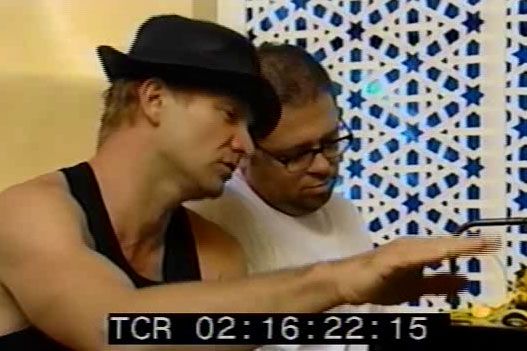
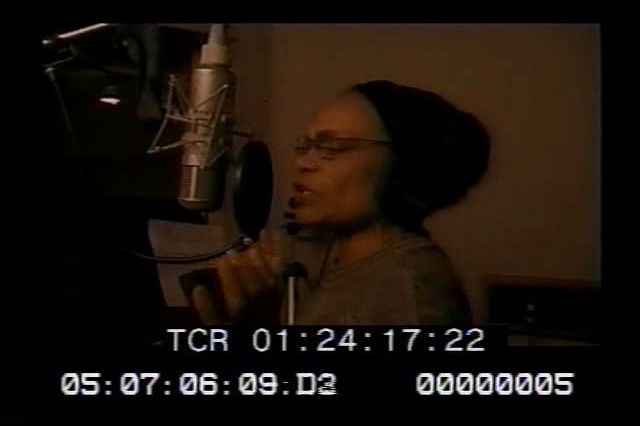
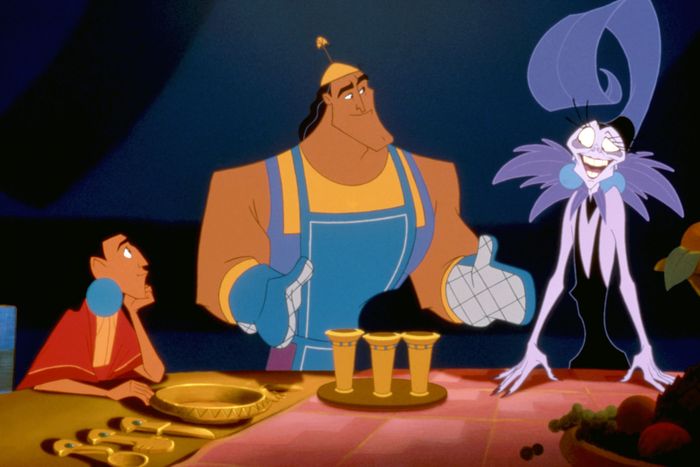
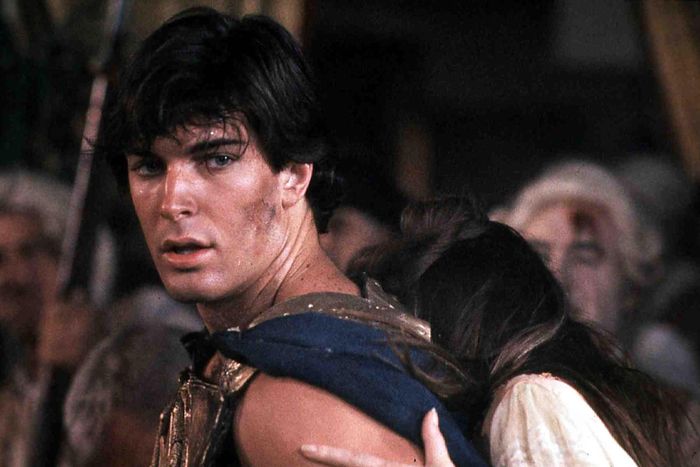
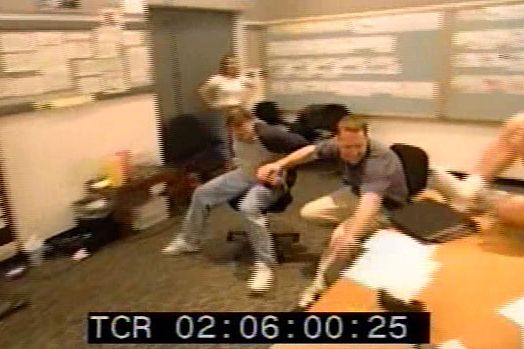
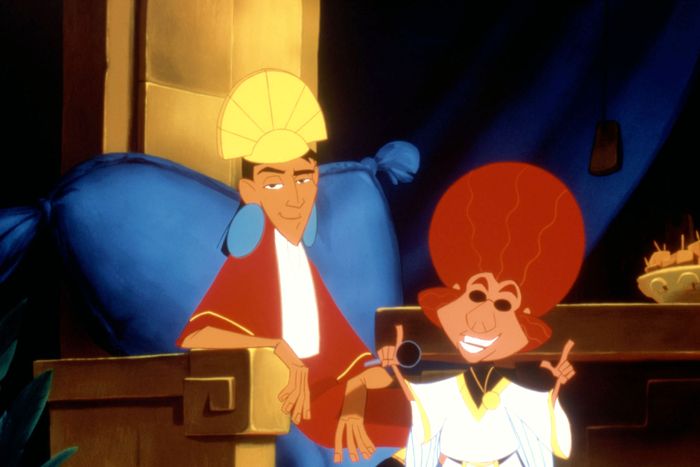
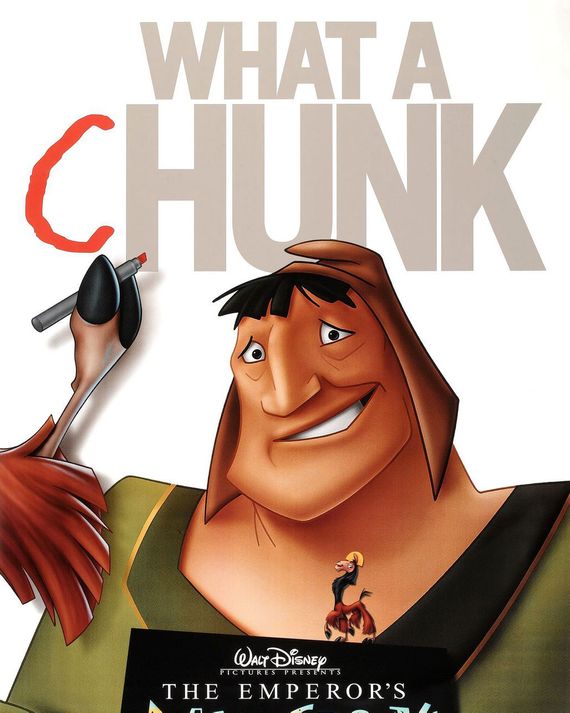














0 Response to "‘We’ll Never Make That Kind of Movie Again’ - Vulture"
Post a Comment